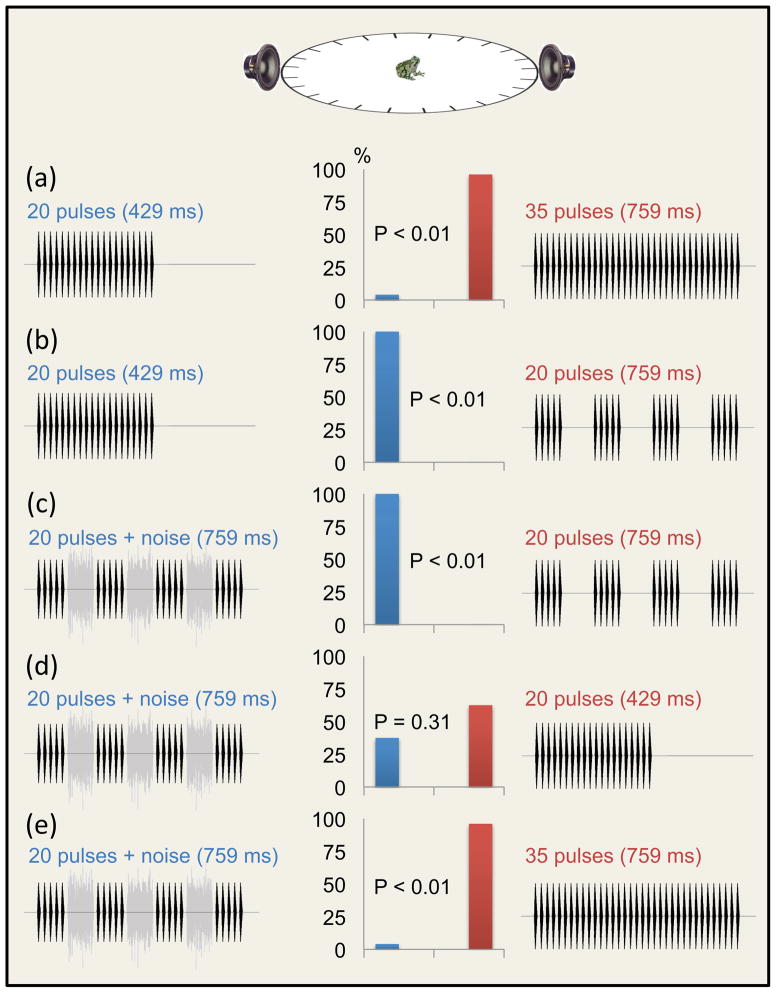Figure 4.
Can frogs fill in the gaps? Studies of auditory induction in frogs have, thus far, failed to uncover convincing evidence that frogs experience a biological analogue of “phonemic restoration” in hearing illusory signal elements (e.g., pulses) that have been replaced by broadband noise. Auditory induction has been investigated in two species of treefrog using two-choice discrimination tests that exploited female preferences for longer signals that contain more pulses [54, 55]. (a) Females of Cope’s gray treefrog (H. chrysoscelis) [55] prefer relatively longer calls composed of continuous trains of pulses. (b) Introducing short gaps into preferred calls by removing pulses can shift female preferences to shorter but nevertheless continuous pulse trains. (c) Filling these gaps with noise can restore the relative attractiveness of the longer signal when compared to equivalent-duration signals with gaps. (d, e) However, there is no evidence that restored attractiveness results because females hear continuous but illusory trains of pulses; if this were the case, we would expect both (d) females to prefer longer, “gap-filled” calls over shorter trains of continuous pulses (which they do not) and (e) gap-filled calls and continuous pulse trains of equivalent duration to be similarly attractive (which they are not).

